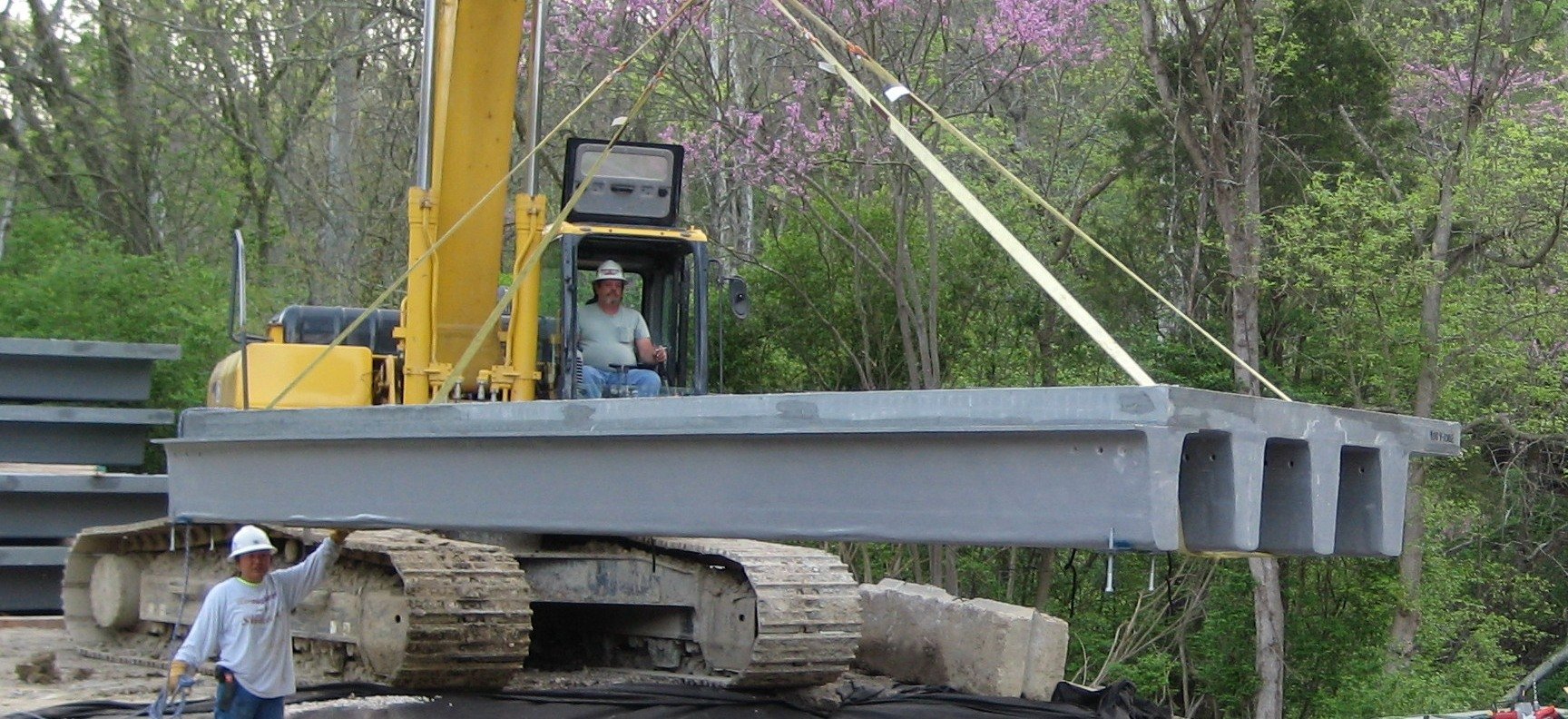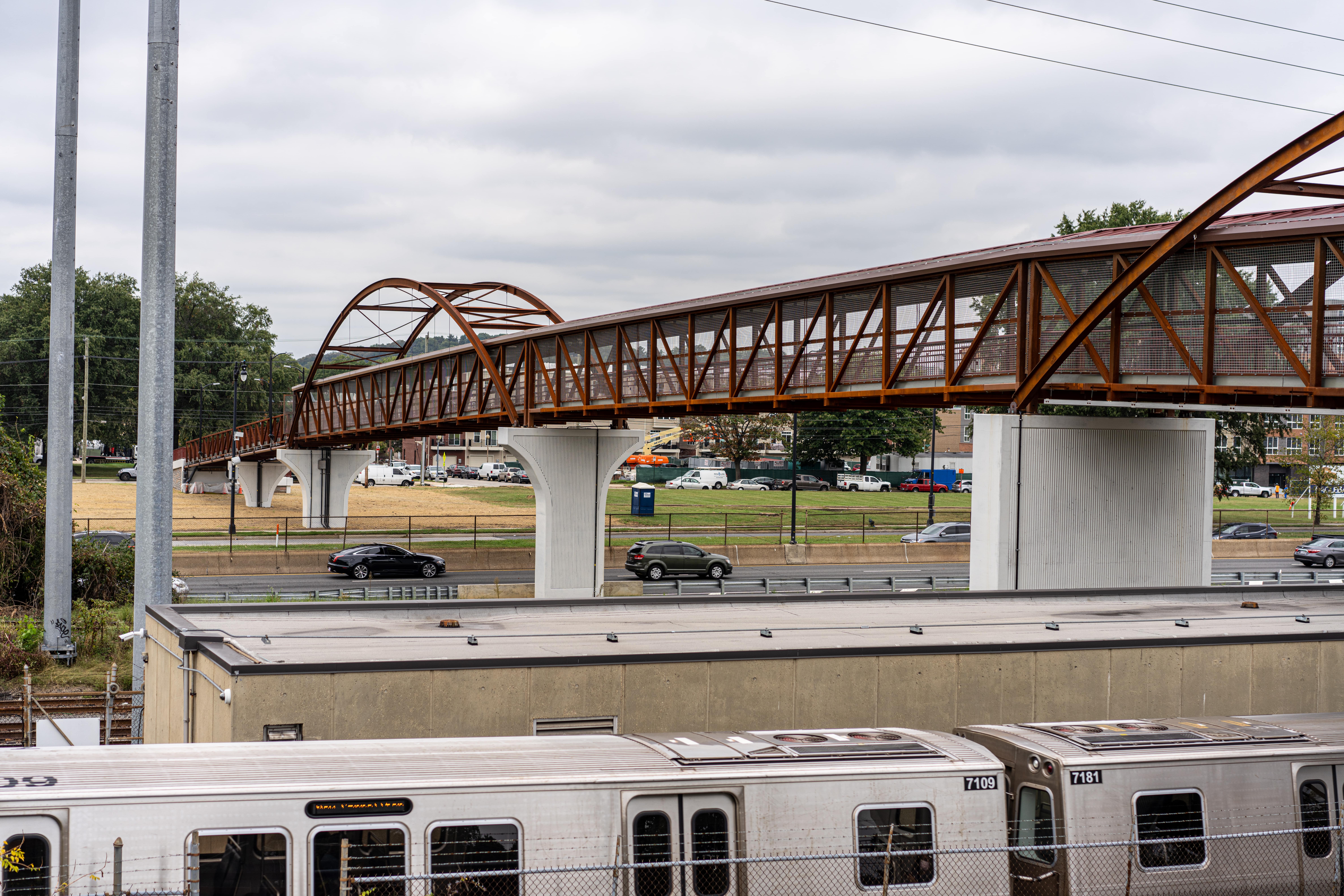
At Composite Advantage, our vision is for Fiber Reinforced Polymer (FRP) materials to have the same acceptance for construction as the traditional materials of steel, concrete and wood. We believe that quality should never be sacrificed for affordability. We believe that reliable, long-lasting products with exceptional performance deliver premium value to each and every one of our clients.
One example of our dedication to quality, affordability, and serviceability can be found in our FiberSPAN-R™ Fiber Reinforced Polymer (FRP) composite rail platforms. These engineered infrastructure products offer major benefits to customers in the transportation industries.
One of the best examples of acceptance of FRP products is our FRP Tee stiffened panels. Tee panels offer several advantages to our clients, such as:
- High level of corrosion resistance
- Excellent load-bearing capacities and durability that can withstand heavy foot traffic
- Durable source materials that withstand deicing chemicals and adverse weather conditions
- Less than 20% the weight of reinforced concrete (80% reduction in weight)
- Prefabricated for fast installation between train schedules
- Reduction in substructure cost for new construction
- Design flexibility to fit on existing platforms
- Accordance with the fire resistance standards of NFPA 130 and ASTM E-84
With a strong combination of advantages, FRP Tee panels are being received as the best material choice. By using us as a supplier for infrastructure product needs, our customers have saved time and money while simultaneously receiving the benefits of a superior product.
FiberSPAN Tee Panel Design Basics
How has our design team crafted such an exceptional product as the FiberSPAN double tee panel? While we don’t give away trade secrets, here are some outstanding features of our FiberSPAN double tee design:
- We carefully mold our tee sections into the body of the panel by means of a special manufacturing process. As a result, there is 100% composite action between the beam and the deck.
- Our design has clear spans up to 50’ (a length of 24’ to 36’ is considered optimal).
- Panels can be as wide as 12’, typically being the platform width.
- The panels are lightweight (15 to 24 psf), especially compared to other products made from reinforced concrete.
- Our panels have a depth range from 16” to 39”. Of course, this depends on the span requirements.
- We offer Double Tee or Triple Tee options depending on load and height restrictions.
- We fabricate each of our panels according to the specific design requirements of the project at hand, letting us provide a high level of customization for our clients. For example, we can make our tee sections “neck down” at piers or rest on piers, or mold our products for crowns, cross slopes, or knockouts.
- Our tactile panels, either bolted or bonded, are factory installed.
- Our rub rails are also factory installed (UHMW-PE or Wood).
- Railings and signs can be attached to the panels
Slab or Double Tee Construction?
Should you use concrete slabs or FRP double tee panels in your construction project? Let’s examine a hypothetical situation to help you answer.
Imagine you are in the design phase for a rail platform that is 500’ long and 12’ wide. Assume that you would need 12’x4’ panel sizes for slab construction, and longitudinal stringers running the length of the station; with the stringers supported on concrete piers. For FRP Tee panel construction, you would only need concrete piers every 32’ and 32’ x12’ panel sizes. How would Tee construction differ from utilizing slabs?
- Slab panels would require the installation of steel supports; double tee panels would not require these additional structures.
- Contractors would have to install some 500 connection points for the slabs, compared to only 96 for the FRP panels.
- The slab construction’s steel stringers would be susceptible to corrosion over time. In contrast, Tee panel construction would require much fewer joints, and no steel stringers at all.
| Slab Panels | Double Tee Panels | |
| Number of Panels Required | 125 panels | 16 panels |
| Panel Cost ($/sf) | Same | |
| Steel Supports Required | Yes | No |
| Linear Feet of Panel to Panel Joints | 1,488 linear feet | 180 linear feet |
| Number of Connection Points for Contractor to Install | 500 | 96 |
| Square Feet Installed Per Day | 1,100 square feet | 3,000 square feet |
| Panel Weight | 600 lbs | 6,413 lbs |
| Corrosion | Steel stringers susceptible to corrosion | Less joints, no steel stringers |
| Overall Cost |
Reduced construction & material cost (no steel stringers) |
|
Contact Us for Your FRP Tee Panel Needs
At Composite Advantage, our in-house design experts would be happy to provide you with design, price, and weight estimates on any platform decking and panels needed for your upcoming project. We pride ourselves on offering high quality, economical options.
If you'd like to learn more about FRP Tee Panels, join us for The Right Rail Platform: FRP Tee Panels, a webinar on how current designers and agencies are using FRP Tee panels, and the ways in which they can provide benefits and solutions to your upcoming projects.
Or, reach out to us and request a free quote. We guarantee that you won’t be disappointed with the end result!
